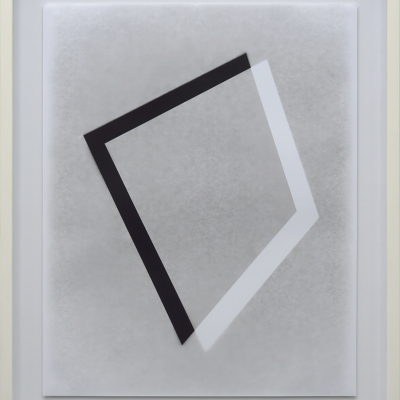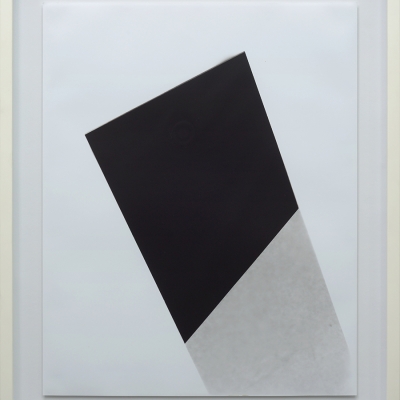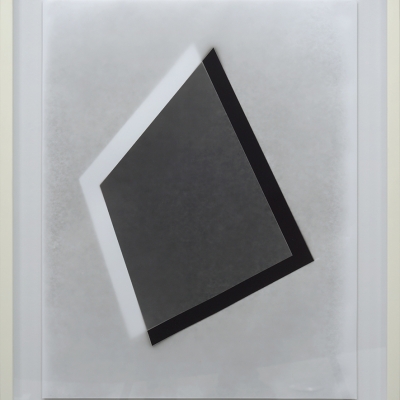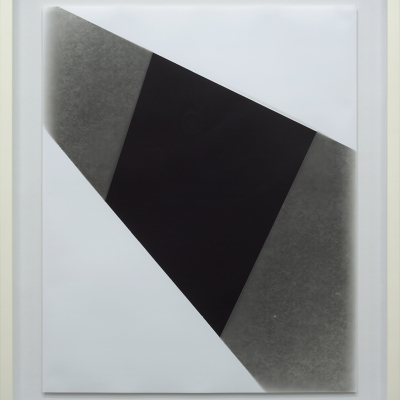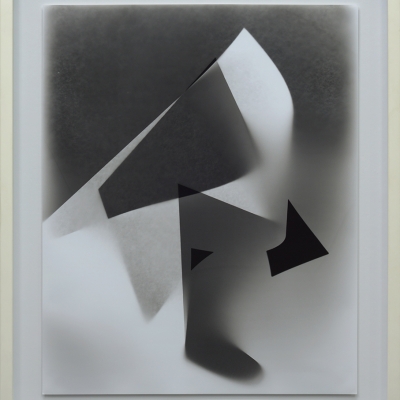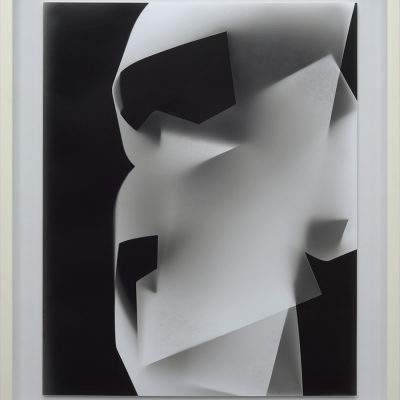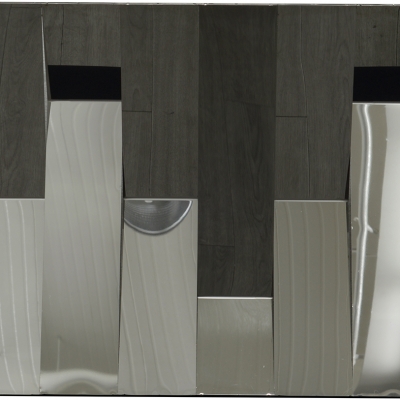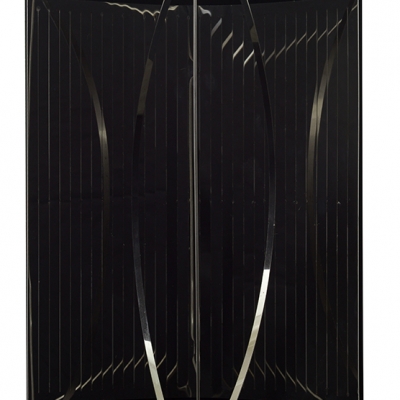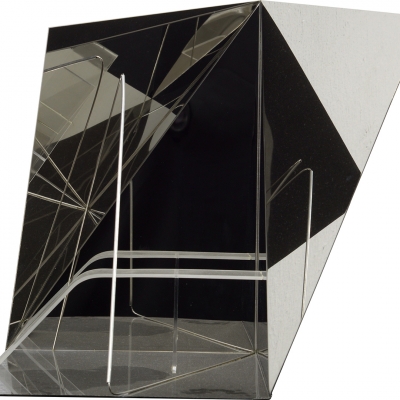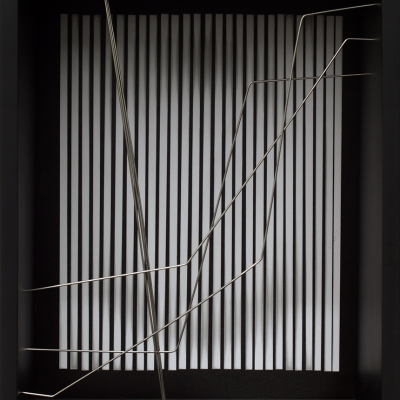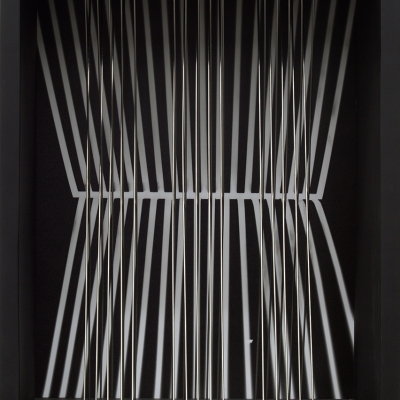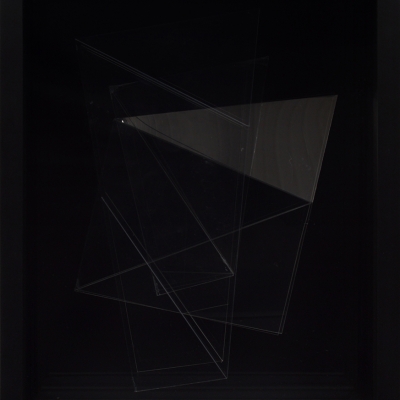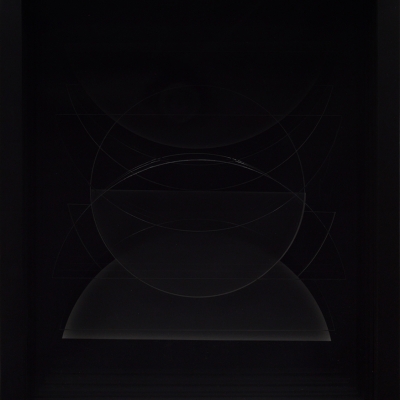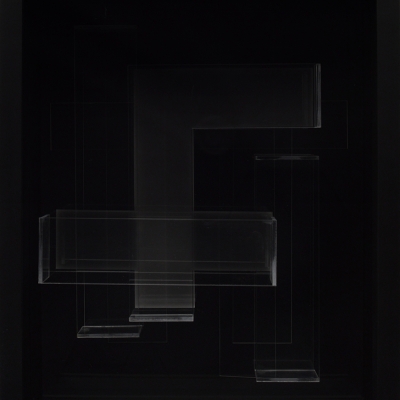Architect and musician Micaela Benedicto’s work as a visual artist involves the creation of abstract networks to explore time, memory and loss. Her investigations often involve the staging of “events”, creating temporary assemblages out of three-dimensional forms and recording the evidence in obscure images. Her fourth solo exhibition, Documenting Absence, follows the recent loss of a loved one, and in it Benedicto examines the idea of a void as something true and tangible – a document of impermanence. New photograms depart from her previous work, larger in scale and appearing in reverse. The object exposed is a blank sheet of paper with a single polygonal opening cut in the center. Most of the light-sensitive surface is covered, leading the eye to focus on the void as a subject. The positive object is manipulated to allow multiple ways of seeing the empty space, progressively transforming it from the structured original to an increasingly unrecognizable form. An extension of the Continuous Form series shown in her previous exhibition furthers the study of ambiguous forms and distances. In these works, black boxes contain photogram images that record minimal traces and facets of three-dimensional objects, arranged in repetitive
formations. The assemblages are exposed in a darkroom then immediately dismantled, the true forms of which are never fully decipherable by the viewer. Networks of metal rods and clear acrylic shapes are superimposed on the photograms, forming see-through fields that mimic or interfere with the gestures in the trace images, thus obscuring the distinction between tactile duplicate and remembered image. A prolonged gaze into each of the dark boxes renders the components increasingly ambiguous, allowing new formations to be become perceptible. In the sculptural work, planes of mirror steel are scored, bent or curved to produce multiple facets, slicing the space before them into angular sections and transforming its reality. The work is inspired by the late fiction author Luis Katigbak’s mention of a multiverse – the idea of different versions of events in alternate space times. The reflected image shifts and changes as one passes before the mirror planes, capturing temporal events of appearance and disappearance.




